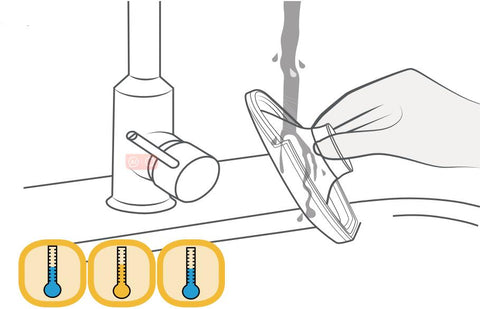In the busy and challenging journey of motherhood, a breast pump has become an essential tool for many mothers. To ensure the safety and hygiene of the breast pump, as well as the health of both mother and baby, it's crucial to follow the correct cleaning and sterilization methods. This guide provides step-by-step instructions on how to effectively clean and sterilize a breast pump, ensuring its optimal performance and hygiene.
Before Using the Breast Pump
Hand Washing:
Wash your hands thoroughly with soap and water for at least 20 seconds.
Dry your hands with a clean towel or paper towel.
Inspecting the Breast Pump Components:
Check the breast pump components for any signs of mold or dirt. Discard any parts with mold to prevent bacterial contamination.
Ensure all components are intact before use.
After Using the Breast Pump
Storing Breast Milk:
Use clean, capped bottles or sealed bags to store expressed breast milk.
Label the storage containers with the date and time of expression.
Store the breast milk in the refrigerator or a cooler bag immediately after expression.
Cleaning the Breast Pump Components:
Disassemble the Components: Separate all parts that come into direct contact with breast milk (such as diaphragms, flanges, connectors, and storage bottles).
Clean Surfaces: Use disinfectant wipes or a clean cloth to wipe down the breast pump, power switch, and work surface.
Hand Washing of Breast Pump Components:

Rinse all parts with clean, drinkable cold water (68°F/20°C).
Wash all parts with plenty of soapy water (about 86°F/30°C) using a detergent available on the market.
Rinse all parts with clean, drinkable cold water (68°F/20°C) for 10-20 seconds, then let them air dry.
Cleaning the Breast Pump Host
Clean the outer shell gently with drinking quality water and an alkaline cleaning solution.
Avoid using abrasive cleaning solutions as they may damage the appearance or internal circuits of the machine.
PS: Babies in the early stages of life (0-3 months) are very fragile, especially premature or immunocompromised babies. Therefore, it's essential for mothers to carefully clean the breast pump after each use and clean the components at least once a day. Otherwise, mold may develop, particularly in humid regions and coastal cities.
By diligently following these steps, you can ensure the cleanliness, safety, and optimal functioning of your breast pump, providing a healthy feeding environment for you and your baby.
This comprehensive guide outlines the essential steps for maintaining hygiene and performance when using a breast pump. By following these guidelines, mothers can ensure a safe and comfortable feeding experience for their babies.









